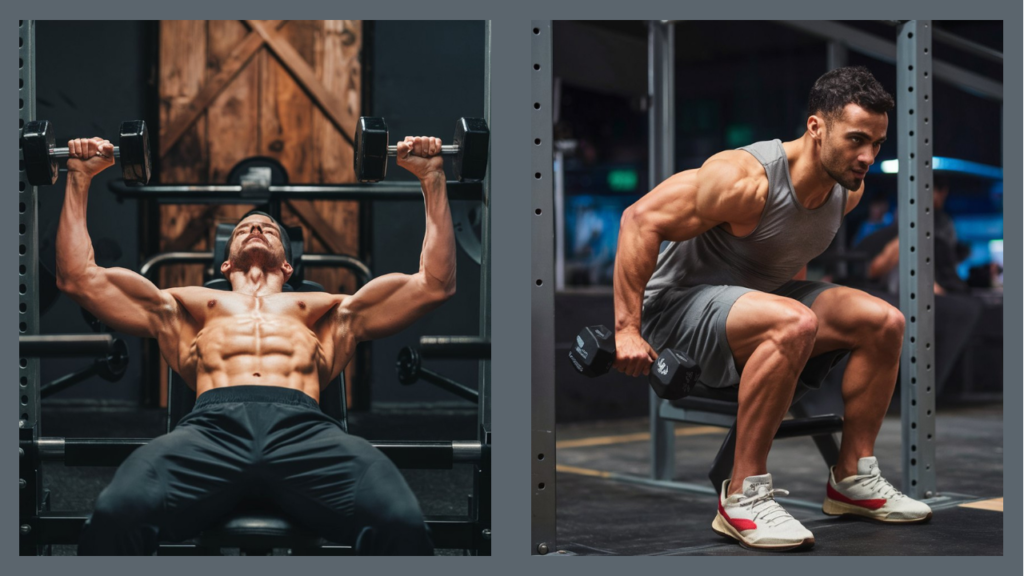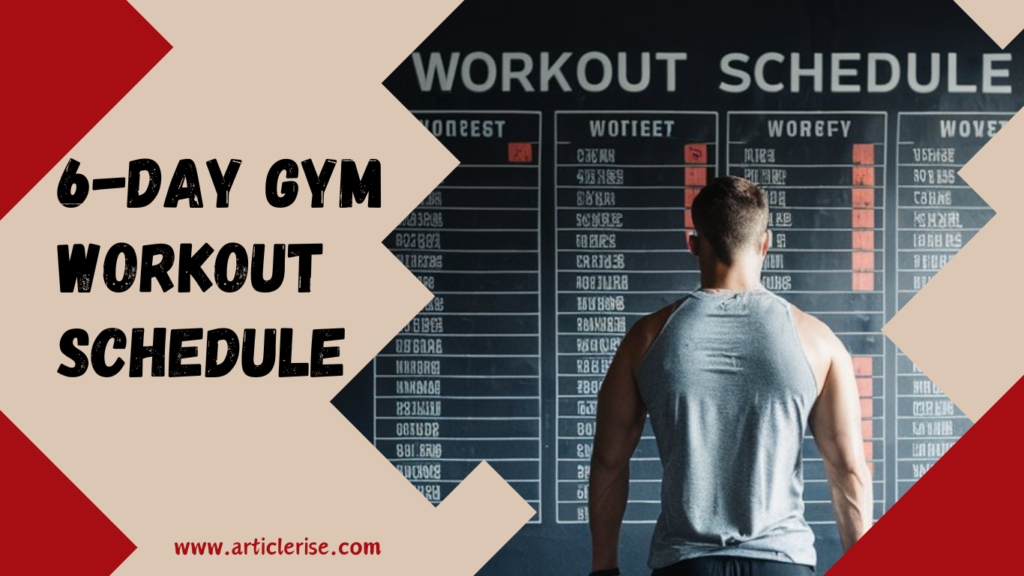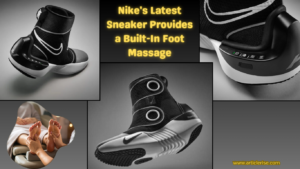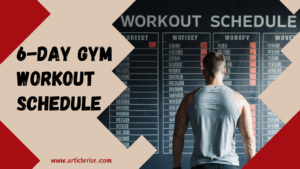Starting a workout schedule is key for anyone with specific fitness goals. A well-thought-out plan not only makes your workouts efficient but also ensures you’re developing all your muscles equally. A 6-day gym workout schedule, in particular, covers all bases—building strength, improving persistence, and allowing enough recovery time.
Day 1: Chest and Triceps
Warming up is crucial to get your muscles and joints ready. Do some dynamic stretches like arm circles and shoulder rotations, and follow up with a few minutes of light cardio.

Chest Workouts
Bench Press: This classic exercise is great for building chest muscles. Try different variations like flat, incline, and decline bench presses to target various parts of your chest.
Incline Dumbbell Press: This focuses on your upper chest. Dumbbells help you move more freely and correct muscle imbalances.
Triceps Workouts
Tricep Dips: Great for building triceps, you can do these on parallel bars or a bench.
Overhead Tricep Extension: This isolates the triceps. Use a dumbbell or an EZ bar to ensure full engagement of the tricep muscle.
Day 2: Back and Biceps
Start with a gentle warm-up for the back and biceps. Light rowing exercises and arm swings work well.

Back Workouts
Deadlifts: Essential for back development, deadlifts work your lower back, glutes, and hamstrings. Make sure to maintain strict form to prevent injuries.
Lat Pulldowns: These focus on your upper back and help build a wider back. Remember to utilize the complete range of motion.
Biceps Workouts
Barbell Curls: A classic exercise for biceps, great for building mass and strength.
Hammer Curls: These target the brachialis muscle under your biceps, adding definition to your upper arm.
Day 3: Legs
Warm up your legs to prevent injuries. Leg swings and bodyweight squats are perfect for activating your leg muscles.

Leg Workouts
Squats: Known as the king of leg exercises, squats engage multiple muscles including your quads, hamstrings, and glutes.
Leg Press: This machine lets you lift heavy without stressing your lower back. It’s a great addition to your leg workout.
Hamstrings and Calves
Hamstring Curls: These isolate the hamstring muscles, ensuring balanced leg development.
Calf Raises: Essential for building strong and big calves. Perform with a full range of motion for the best results.
Day 4: Shoulders and Abs
Warm up with arm circles and torso twists to get your shoulders and abs ready.

Shoulder Workouts
Shoulder Press: Crucial for building shoulder strength and mass. Remember to utilize the complete range of motion.
Lateral Raises: These target the deltoid muscles, helping you build wider, more defined shoulders.
Abs Workouts
Planks: Great for core stability and strength, engaging multiple abdominal muscles.
Russian Twists target your obliques, adding definition to your waist and strengthening your core.
Day 5: Full Body HIIT
HIIT (High-Intensity Interval Training) is an effective way to burn fat and boost cardiovascular fitness. It requires brief bursts of high-intensity exercise followed by rest.

HIIT Workouts
Burpees: A full-body exercise that increases your heart rate and endurance.
Mountain Climbers: These engage multiple muscles and are excellent for cardiovascular health.
Day 6: Active Recovery
Active recovery promotes blood flow to your muscles, helping them recover and reducing soreness.
Recovery Activities
Yoga: Improves flexibility, balance, and mental clarity. It’s great for stretching and relaxing muscles.
Light Jogging: Promotes cardiovascular health and aids in muscle recovery without overexertion.
Stretching and Mobility
Include both dynamic and static stretching to improve flexibility and joint mobility. Focus on areas that feel tight.
Nutrition and Hydration
Proper nutrition is vital for muscle growth and recovery. A balanced diet gives you the nutrients needed to fuel your workouts and repair muscles.
Meal Planning
Include protein-rich foods, complex carbs, and healthy fats in your diet. Planning your meals helps ensure you get the nutrients needed for muscle growth.
Hydration
Staying hydrated is crucial for performance and recovery. Stay hydrated by drinking plenty of water all day and while you’re exercising.
Rest and Recovery
Rest days are essential for muscle repair and growth. They prevent overtraining and reduce injury risk.
Optimal Recovery Strategies
Incorporate activities like foam rolling and massage to aid muscle recovery. Ensure you get enough sleep, as it is critical for muscle repair. Strive to get a good 7-9 hours of sleep every night for optimal rest.
Tracking Progress
Monitoring progress is essential to see if your workout plan is effective. Use fitness apps, journals, or spreadsheets to track your workouts, weights, and body measurements. Regular progress photos can also help.

Common Mistakes to Avoid
Overtraining: This can lead to injuries and burnout. Listen to your body and take rest days to prevent overexertion.
Poor Form: Incorrect form can cause injuries and reduce exercise effectiveness. Prioritize using the correct technique over trying to lift heavier weights.
Ignoring Rest Days: Rest days are crucial for muscle recovery and growth. Skipping them can lead to overtraining and hinder progress.
Conclusion
A structured 6-day workout schedule is a comprehensive approach to fitness, promoting strength, endurance, and balanced muscle development. By focusing on different muscle groups each day, mixing in strength training, HIIT, and active recovery, and emphasizing proper nutrition and rest, you can achieve optimal results. Tracking progress, avoiding common mistakes, and staying motivated is key to long-term success and overall wellness.







